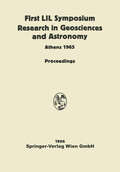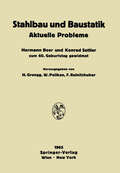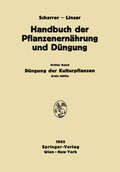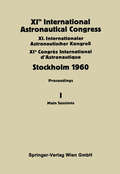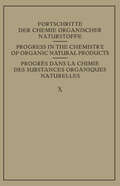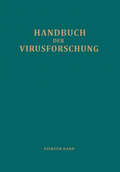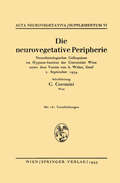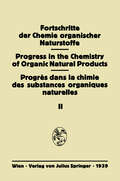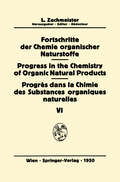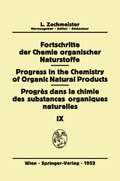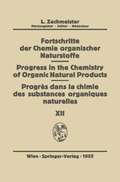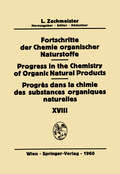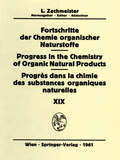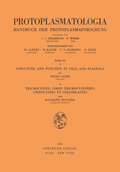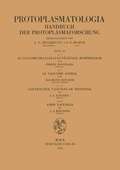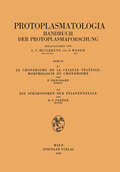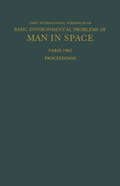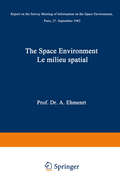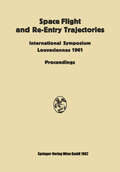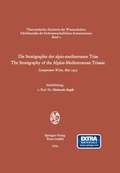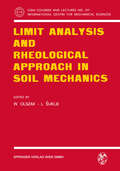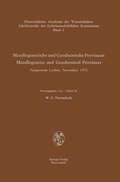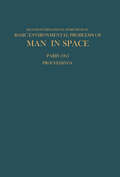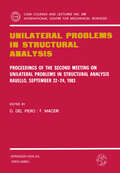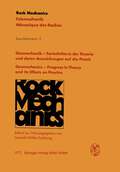- Table View
- List View
Proceedings of the First Lunar International Laboratory (LIL) Symposium Research in Geosciences and Astronomy: Organized by the International Academy of Astronautics at the XVIth International Astronautical Congress Athens, 16 September, 1965 and Dedicated to the Twentieth Anniversary of UNESCO
by Frank J. MalinaThe Lunar International Laboratory (LIL) project of the International Academy of Astronautics was begun upon the proposal of the editor at the First Special Meeting of the Academy at Stockholm on 16 August 1960. The late THEODORE VON KARMAN, first President of the Academy, appointed the following members of the LIL Committee: Prof. N. BoNEFF (Bulgaria), Prof. M. FLoRKIN (Belgium), Mr. A. G. HALEY (U. S. A. ), Prof. Sir BERNARD LovELL (U. K. ) (Vice Chairman), Prof. L. MALAVARD (France), Dr. F. J. MALINA (U. S. A. ) (Chairman), Prof. H. 0BERTH (German Federal Republic), Dr. W. H. PicKERING (U. S. A. ), Prof. E. SANGER (German Federal Republic), Prof. L. I. SEDOV (U. S. S. R. ), Prof. L. SPITZER, JR. (U. S. A. ), Dr. H. STRUGHOLD (U. S. A. ), Prof. H. C. UREY (U. S. A. ) and himself. Since 1960 the following additional members were appointed to the Committee: Mr. A. C. CLARKE (U. K. ), Prof. A. DoLLFUS (France), Prof. Z. KoPAL (U. K. ), Dr. S. F. SINGER (U. S. A. ), Prof. N. M. SISSAKIAN (U. S. S. R. ) and Prof. F. ZWICKY (Switzerland). The Academy authorized the Committee to study the technical problems related to the construction of a manned research laboratory on the Moon and the feasibility of carrying out its construction, and to consider the fields of research which would initially be undertaken.
Stahlbau und Baustatik: Aktuelle Probleme
by Hermann Grengg Walter Pelikan F. ReinitzhuberHermann Beer und Konrad Sattler zum 60. Geburtstag gewidmet
Düngung der Kulturpflanzen: Erste Hälfte (Handbuch der Pflanzenernährung und Düngung #3 / 1)
by N. Atanasiu W. Baden F. Baltin L. D. Baver A. Blamauer E. v. Boguslawski K. Bräunlich D. Brüning Y. Coïc Diplomgärtnerin Liselotte Forchthammer W. Frohner A. Fruhstorfer L. Gisiger M. Gökgöl W. Gruppe C. Heinemann W. Jahn-Deesbach J. Jung E. Klapp L. M. Kopetz H. Kraut P. W. Kürten H. Linser H. Löcker H. Lüdecke Direktor F. Mappes A. v. Müller W. Müller K. Nehring K.-H. Neumann F. Penningsfeld Edith Primost H. Rüther K. Schmid H. Schröder W. Schuster O. Siegel O. Steineck R. Steiner V. Tay?i H. Will W. Wirths F. ZattlerSeit dem Erscheinen des zweibändigen Standardwerkes von F. HONCAMP, "Handbuch der Pflanzenernährung und Düngerlehre", sind mehr als dreißig Jahre vergangen. Bei den stürmischen Fortschritten auf allen Gebieten der Natur wissenschaften, insbesondere der Chemie, Pflanzenphysiologie, Biochemie, Bodenkunde und Technologie, ist dieses zur Zeit seines Erscheinens so aus gezeichnete Handbuch natürlich längst veraltet. Zweifellos besteht heute ein dringendes Bedürfnis nach einem ähnlichen Werk. Wenn wir von dem ursprünglichen Plan abgekommen sind, das HONCAMP sche Handbuch in neuer Auflage zu bearbeiten, so vor allem deswegen, weil die tiefgreifende Entwicklung auf diesem Gebiet eine völlig neue Gestaltung des Werkes geboten erscheinen ließ. Es gliedert sich nun in drei Bände. Band I behandelt im wesentlichen die physiologischen Grundlagen der Pflanzenernährung. Er enthält eine ausführliche und systematische Darstellung der eigentlichen Ernährungsphysiologie. Auf eine Erörterung der allgemeinen pflanzen physiologischen Grundlagen konnte dabei verzichtet werden, weil im RUHLAND sehen "Handbuch der Pflanzenphysiologie" ein umfassendes und modernes Nach schlagewerk zur Verfügung steht. Band II beschäftigt sich mit dem Boden und den Düngemitteln. Unter Berücksichtigung der modernen Agrikulturchemie haben wir das heutige Wissen über den Boden als Standort und Nährstoffquelle der Pflanze unter den Verhält nissen der landwirtschaftlichen Praxis und des Gartenbaues bzw. des Forstwesens systematisch zusammengefaßt. Die folgenden Kapitel befassen sich mit der Beschreibung und Herstellung der verschiedenen Wirtschafts- und Handels düngemittel. Gerade auf diesem Gebiet bestehen in der wissenschaftlichen Literatur erhebliche Lücken, da keine größeren Lehr-oder Handbücher vorhanden sind, die sich eingehender mit der Technologie der Düngemittel und der Düngung beschäftigen.
XIth International Astronautical Congress Stockholm 1960: Proceedings Vol I: Main Sessions
by C. W. P. Reuterswärd A. HjertstrandFortschritte der Chemie Organischer Naturstoffe / Progress in the Chemistry of Organic Natural Products / Progres dans La Chimie des Substances Organiques Naturelles (Fortschritte der Chemie organischer Naturstoffe Progress in the Chemistry of Organic Natural Products #10)
by K. Alder J. Asselineau A. Chatterjee L. Feinstein M. Jacobson E. Lederer H. Mark G. Rosenkranz M. Schumacher F. SondheimerDie neurovegetative Peripherie: Neurohistologisches Colloquium im Hygiene-Institut der Universität Wien unter dem Vorsitz von A. Weber, Genf 2. September 1954 (Acta Neurovegetativa Supplementa #6)
by Carmen CoroniniFortschritte der Chemie Organischer Naturstoffe: Eine Sammlung von Zusammenfassenden Berichten (Fortschritte der Chemie organischer Naturstoffe Progress in the Chemistry of Organic Natural Products #2)
by Y. Asahina C. Dhere K. Freudenberg C. R. Harington E. L. Hirst F. Kuffner H. Rudy E. Späth G. Toth L. Zechmeister G. ZemplenDieser Buchtitel ist Teil des Digitalisierungsprojekts Springer Book Archives mit Publikationen, die seit den Anfängen des Verlags von 1842 erschienen sind. Der Verlag stellt mit diesem Archiv Quellen für die historische wie auch die disziplingeschichtliche Forschung zur Verfügung, die jeweils im historischen Kontext betrachtet werden müssen. Dieser Titel erschien in der Zeit vor 1945 und wird daher in seiner zeittypischen politisch-ideologischen Ausrichtung vom Verlag nicht beworben.
Fortschritte der Chemie Organischer Naturstoffe/Progress in the Chemistry of Organic Natural Products/Progrès Dans la Chimie des Substances Organiques Naturelles (Fortschritte der Chemie organischer Naturstoffe Progress in the Chemistry of Organic Natural Products #6)
by J. Bonner H.J.Jr. Deuel C. Dhere S. M. Greenberg O. Hoffmann-Ostenhof E. Lederer L. RetiFortschritte der Chemie Organischer Naturstoffe/Progress in the Chemistry of Organic Natural Products/Progrès Dans La Chimie Des Substances Organiques Naturelles (Fortschritte der Chemie organischer Naturstoffe Progress in the Chemistry of Organic Natural Products #9)
by J. G. Baxter H. Borsook N. Bulman D. H. Campbell F. M. Dean H. H. Inhoffen H. M. Kalckar W. S. McNutt P. Meunier H. Siemer A. Stoll M. TomitaFortschritte der Chemie Organischer Naturstoffe/Progress in the Chemistry of Organic Natural Products/Progres dans la Chimie des Substances Organiques Naturelŀes (Fortschritte der Chemie organischer Naturstoffe Progress in the Chemistry of Organic Natural Products #12)
by G. W. Beadle A.J. Haagen-Smit T. G Halsall F. T. Haxo E.R.H. Jones R. Michel J. Roche K. Slotta A. R. Thompson E.O.P. Thompson R. Tschesche F. L. WarrenSubstances belonging to this group of organic compounds are wi,lely distributed in Nature, being found in plants, both higher and lower fungi and, upto the present time, in one animal source, sheep wool-fat. For a long time no real differentiation was possible between the tetra- and penta cyclic triterpenes and the sterols. Then the two latter became disting uishable by their selenium. ·dehydrogenation products, i. e. , picene and naphthalene derivatives from the pentacyclic triterpenes and DIELS' hydrocarbon from the sterols. It is now apparent that those compounds yielding predominantly I: 2: 8-trimethylphenanthrene on dehydro genation represent yet another class, and this property is regarded as typical of the tetracyclic triterpenes. The group contains both C and C 30 3l compounds and, although the latter fall outside RUZICKA'S strict definition of triterpenes (I42), it seems desirable to permit this deviation. Members with thirty-two carbon atoms may well be discovered in due course. In a most· valuable account of the triterpenes written in I949, JEGER. (II3) was able to summarize all that was known about the tetra cyclic group in a very small compass. Most of the work discussed in the present article has been published during the last five years and in that time the structures of some twenty compounds have been elucidated. Of outstanding importance is the revelation of close structural relation ships tQ the steroids, and the presence of C and C side-chains, skeletally 8 9 identical with those of cholesterol and ergosterol.
Fortschritte der Chemie organischer Naturstoffe / Progress in the Chemistry of Organic Natural Products / Progrés Dans la Chimie des Substances Organiques Naturelles (Fortschritte der Chemie organischer Naturstoffe Progress in the Chemistry of Organic Natural Products #18)
by P. W. Brian H. Brockmann J. F. Grove M. Heidelberger A. Kjaer J. Macmillan M. Pailer J. Roche N. Van Thoai O. Völker J. W. Williams L. ZechmeisterFortschritte der Chemie Organischer Naturstoffe / Progress in the Chemistry of Organic Natural Products / Progrès dans la Chimie des Substances Organiques Naturelles (Fortschritte der Chemie organischer Naturstoffe Progress in the Chemistry of Organic Natural Products #19)
by D.H.R. Barton J. E. Courtois L. Crombie M. Elliot S. Ito A. Lino G. A. Morrison T. Nozoe H. H. Schlubach F. Sorm E.E. Van TamelenStructure and Function in Cilia and Flagella / Trichocystes, Corps Trichocystoïdes, Cnidocystes et Colloblastes (Protoplasmatologia Cell Biology Monographs #3 / E,F)
by Peter Satir Raymond HovasseLe Vacuome de la Cellule Végétale: Morphologie. Le Vacuome Animal. Contractile Vacuoles of Protozoa. Food Vacuoles (Protoplasmatologia Cell Biology Monographs #3 / D / 1,2,3a,3b)
by Pierre Dangeard Raymond Hovasse J.A. KitchingIt is also possible that contractile vacuoles originate by some form of phase separation not yet understood and possibly involving the contractile properties of proteins, and' it is possible that this process continues to operate in the walls of the vacuoles or feeder canals. This secretory process may be the function of that part of the vacuolar apparatus which blackens on impregnation with osmic acid, and which seems to possess some degree of permanence from vacuole to vacuole and in some cases from parent to daughter cell. Remarkably little is known about the mechanism of systole. General body turgor may contribute, but it is not essential. In ciliates the main force is local and probably comes from a tension in the wall of the vacuole itself, but it is not known whether or not this is an active contraction of an oriented protein layer. The critical process for the initiation of systole is probably the opening of the pore. It is possible that in ciliates there is a rhythmically operating independent timing mechani,sm by which the vacuolar cycle is controlled, but its existence has not been demonstrated.
Le Chondriome de la Cellule Vegetale: Morphologie du Chondriome. Die Sphärosomen der Pflanzenzelle (Protoplasmatologia Cell Biology Monographs #3 / A / 1,2)
by Pierre Dangeard Ernst S. PernerProceedings of the First International Symposium on Basic Environmental Problems of Man in Space: Paris, 29 October — 2 November 1962
by Hilding BjurstedtThis volume contains the communications and discussions of the First Inter national Symposium on Basic Environmental Problems of Man in Space, which was held 29 October - 2 November 1962 at Unesco House, Paris, under the joint sponsorship of the International Astronautical Federation (IAF) and the International Academy of Astronautics (IAA) with the cooperation and support of Unesco, the International Atomic Energy Agency (IAEA) and the World Health Organization (WHO). At this Symposium 31 communications were presented, 8 of which were from the USSR, 8 from the USA, and 15 from other countries, all by special invitation. The presentations, which included three general review papers, were made in ten half-day working sessions by a distinguished international group. The pro ceedings were not restricted to the acute professional aspects of man in space. In fact, the majority of the vast store of material contained in this volume deals with the more scientific aspects, i. e. with problems of the future, which are con tributed mainly by conventional areas of physiology and psychophysiology, including the technical research activities pertaining to the acquisition, analysis and control of biomedical data.
The Space Environment / Le Milieu Spatial: Report on the Survey Meeting of Information on the Space Environment Paris, 27 September 1963
by Alfred EhmertOrganized by the International Academy of Astronautics and the International Astronautical Federation with the Support and Cooperation of UNESCO and the Scientific Cooperation of COSPAR
Space Flight and Re-Entry Trajectories: International Symposium Organized by the International Academy of Astronautics of the IAF Louveciennes, 19–21 June 1961 Proceedings
by Paul A. LibbyIn this and a following issue (Vol. VIII, 1962, Fasc. 2-3) of "Astronautica Acta" there will appear the papers presented at the first international symposium sponsored by the International Academy of Astronautics of the International Astronautical Federation. The theme of the meeting was "Space Flight and Re-Entry Trajectories." It was held at Louveciennes outside of Paris on June 19-21, 1961. Sixteen papers by authors from nine countries were presented; attendees numbered from 80 to 100. The organizing committee for the symposium was as follows: Prof. PAUL A. LIBBY, Polytechnic Institute of Brooklyn, U.S.A., Chairman; Prof. LuiGI BROGLIO, University of Rome, Italy; Prof. B. FRAEIJS DE VEUBEKE, University of Liege, Belgium; Dr. D. G. KING-HELE, Royal Aircraft Establishment, Farnborough, Rants, United Kingdom; Prof. J. M. J. KooY, Royal Military School, Breda, Netherlands; Prof. JEAN KovALEVSKY, Bureau des Longitudes, Paris, France; Prof. RuDOLF PESEK, Academy of Sciences, Prague, Czechoslovakia. The detailed arrangements for the meeting were made in a most satisfactory manner by Dr. FRANK J. MALINA, Deputy Director of IAA and Mr. A. R. WEILLER, Acting Secretary of IAA. Prof. THEODORE VON KARMAN, Director of IAA, in his remarks closing the symposium indicated his satisfaction at the interest being shown in "the science of the future." The papers which follow will make a permanent contribution to the literature of this science.
Die Stratigraphie der alpin-mediterranen Trias / The Stratigraphy of the Alpine-Mediterranean Triassic: Symposium Wien, Mai 1973 (Schriftenreihe der Erdwissenschaftlichen Kommission #2)
by Helmuth ZapfeOrganisiert im Hinblick auf das Internationale Geologische Korrelationsprogramm (IGCP)
Limit Analysis and Rheological Approach in Soil Mechanics (CISM International Centre for Mechanical Sciences #217)
by G. de Josselin de Jong Z. Mroz C. SzymanskiMetallogenetische und Geochemische Provinzen / Metallogenetic and Geochemical Provinces: Symposium Leoben, November 1972 (Schriftenreihe der Erdwissenschaftlichen Kommission #1)
by W. E. PetrascheckOrganisiert im Hinblick auf das Internationale Geologische Korrelationsprogramm (IGCP)
Proceedings of the Second International Symposium on Basic Environmental Problems of Man in Space: Paris, 14–18 June 1965
by Hilding BjurstedtOrganized by the International Astronautical Federation and the International Academy of Astronautics with the Support and Cooperation of UNESCO, the International Atomic Energy Agency, the WHO, the World Meteorological Organization, andthe International Telecommunication Union
